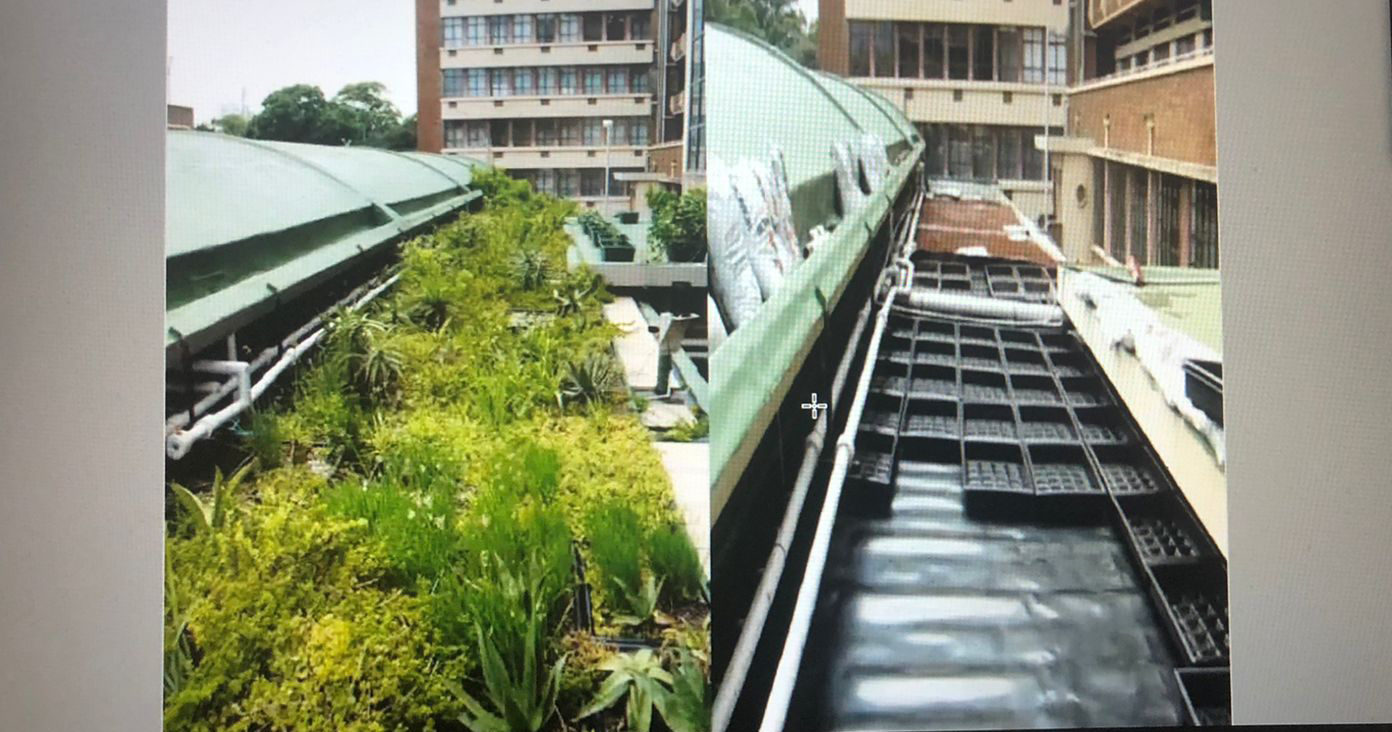click to dowload our latest edition
CLICK HERE TO SUBSCRIBE TO OUR NEWSLETTER


Published
3 years agoon
By
Steven GruzdThe Dizengoff Center, Tel Aviv’s oldest shopping mall, sits in the heart of the bustling central business district. Surrounded by skyscrapers, it’s the last place you’d expect to find bat colonies, beehives, and aquaponic gardens (where fish waste feeds plants grown entirely in water). Creative thinking is turning concrete rooftops into productive urban green spaces. And urban farming is growing in South Africa too.
These issues were dug into on 8 July, in a webinar co-hosted by the Jewish National Fund of South Africa (JNF-SA) and the Johannesburg Inner City Partnership. The theme was, “Survival in our city: food and water security – a South African crisis. Is urban farming a solution?”
Dorit Chassid is sustainability manager at the Dizengoff Center, which opened in 1977. “Why does a shopping mall need such a position?” she asked. “It’s to create balance and lower the impact of our actions for the environment. We want to get to net-zero carbon emissions by 2028 [in which the pollution put into the environment is offset by green initiatives].”
The centre has forward-looking, innovative management. For instance, it has a social gallery where local artists display their work. It hosts regular food markets for entrepreneurs, and has regular visits from school groups who learn about sustainability in an urban environment.
“That’s why we have bats in our cellar,” Chassid said. “They are an important part of the ecosystem.” She also talked about how the centre recycles dry waste and electronic waste. It has just installed a huge composter to tackle organic waste recycling to feed its rooftop urban farm. There, it houses beehives, but doesn’t harvest the honey.
Always experimenting, the centre’s rooftop gardens used to supply fresh vegetables to 15 nearby restaurants, but it wasn’t economically viable. The space is now used to teach children about hydroponics (growing plants in water) and aquaponics. Every year on Tu B’Shvat, the festival dubbed “the new year of the trees”, 1 500 children plant trees that are then then donated to the JNF after a year’s growth.
Dr Naudé Malan is a senior lecturer in development studies at the University of Johannesburg and serves on the Agricultural Research Council of South Africa. He convenes iZindaba Zokudla (Conversations about Food), a multi-stakeholder engagement project that aims to create opportunities for urban agriculture in a sustainable food system in Soweto.
Malan said most farmers earn only between 12% and 27% on the food they grow, with supermarkets gobbling up the rest. “Farmers need to capture the value chain,” he said, and find a way to add value to their produce. “Any farmer can supply fresh food, even in a city … unless a farmer can create a circular, self-sustaining enterprise, he or she will be forever marginalised.”
Siyabonga Ndlangamandla works on urban farming in Johannesburg. He is currently working on food production and distribution systems in Victoria Yards, a revamped inner-city precinct.
Food produced at Victoria Yards supplies many poor people in Bertrams and surrounding areas. “Watching vegetables grow changes your mindset – it teaches patience and discipline,” Ndlangamandla said. “Victoria Yards really showcases what can be achieved in an urban setting. We need to plant more backyard food gardens, street gardens, pavement gardens.”
Completing the panel was Dr Clive Greenstone, who has received several awards for sustainable design and innovation in the built environment. This urban ecologist is the founder of Green Roof Designs, a specialised environmental design company.
“There is so much wasted space in cities,” Greenstone said, showing a picture of what the Durban CBD might look like with green gardens dotted all along its rooftops.
He has developed many rooftop gardens in the city, growing medicinal plants, food plants, and tropical foliage in trays, tyres, and old boots and shoes. The gardens attract bees, wasps, flies, butterflies, and birds, all vital for pollination and promoting biodiversity. He also grows food indoors under lights, and designs vertical gardens on walls. All materials used in his gardens must be sourced from within a 50km radius.
“Brilliant ideas often receive resistance from mediocre minds,” Greenstone said.
As South Africa’s cities swell from urbanisation, it’s hoped that many more rooftops will produce fresh food to feed the hungry.
